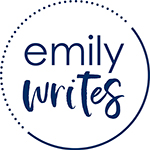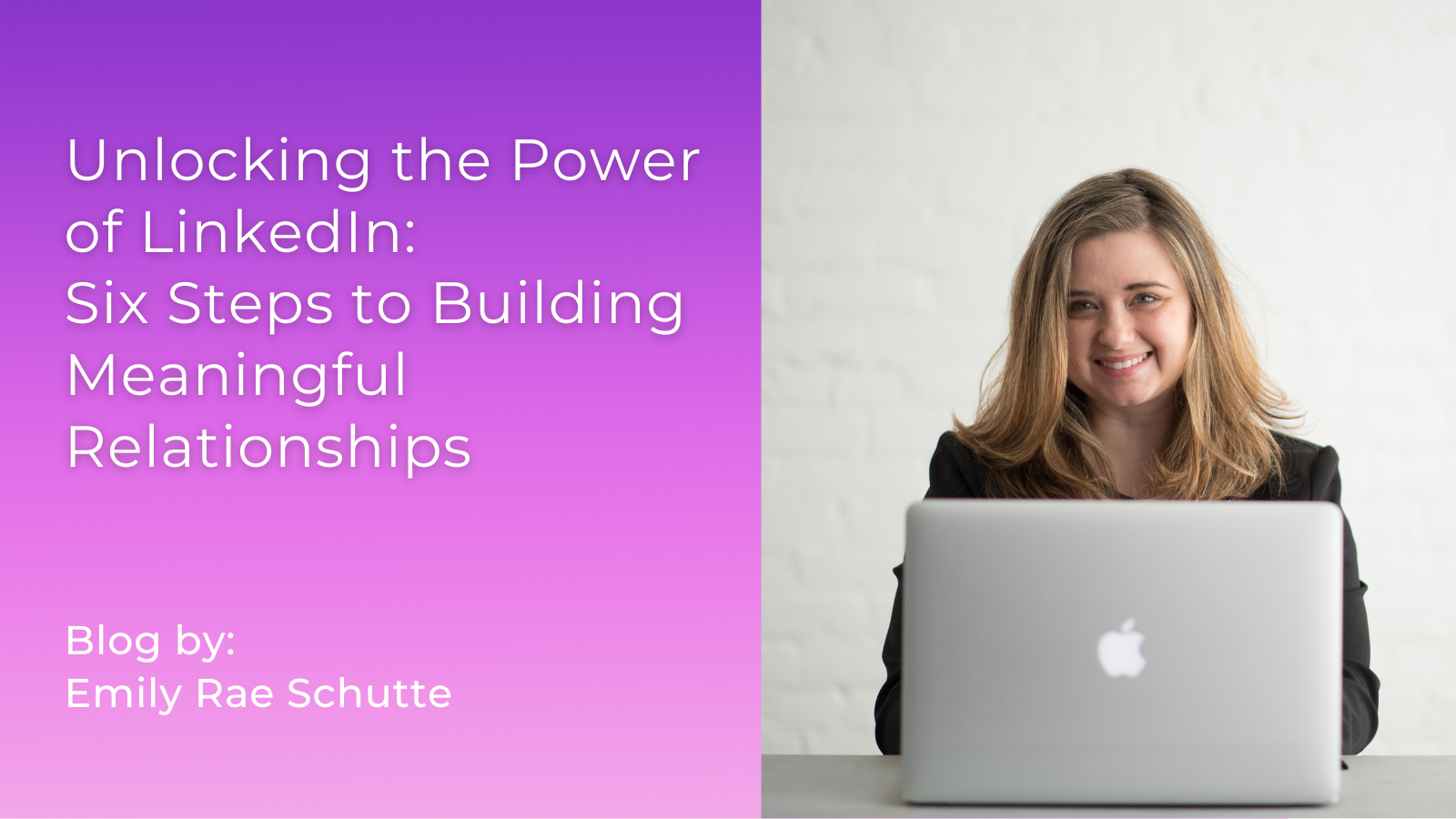While marketers are still debating whether or not organic social media is worth the time and investment, no one is questioning the value of relationships when it comes to business. People matter. Relationships matter. And in a fractured world, trust is a priceless commodity.
In my experience, LinkedIn is still the best social media platform for building genuine, mutually beneficial business relationships. Here’s a quick rundown of how I’ve found success, personally, and then I’ll share some practical tips for leveraging the platform for yourself.
Experimenting with LinkedIn
I first got serious about LinkedIn while working in the corporate world, back in about 2014/2015. I began putting effort into building my network with meaningful connections, especially work colleagues and people I met through my MBA program.
Those efforts paid off when it came time to job hunt post-grad school, and I found my next job right on LinkedIn! When it turned out not to be a good cultural fit, I decided to get smart about my next career move, and used LinkedIn to thoroughly vet my next round of job applications. I did this by reaching out to 1st and 2nd degree connections at the companies and industries I was interested in entering and asking about their experiences. My next job was an excellent fit, and I stayed there until the pull of self-employment became too strong.
As a baby entrepreneur, I relied on LinkedIn to help me land some of my first clients. Word-of-mouth helped me grow, and LinkedIn amplified that growth. Today, I often get inquiries about my services through LinkedIn, and use the platform to research all potential clients and companies. I publish a bi-weekly newsletter with over 4,000 subscribers and spend about 10 minutes a day engaging with my feed and connections.
Needless to say, LinkedIn has been worth the experiment!
Leveraging the Power of LinkedIn for Small Businesses
LinkedIn is more than just an online resume database. It’s a goldmine for networking, growing your business, and building long-lasting relationships. But how do you tap into its full potential?
Step 1: Hone Your Profile
Give your LinkedIn profile a makeover so it speaks for you even when you’re offline. Start with a headline that captures the essence of your professional persona. Remember, this is not the time to be shy – brag about what you do, and use clear, unambiguous language.
A high-quality profile picture is also crucial. Skip the bathroom selfie or that blurry crop from last year’s holiday party. Instead, opt for a clear, well-lit headshot with a neutral background.
Write a memorable summary that showcases your personal brand and your areas of expertise. Make sure the first 3-4 lines capture the essence of what you want to say – most people won’t click the “read more” button!
Break up your summary into multiple paragraphs and use headlines or bullet points to make it easier to read (here’s mine as an example). As a business owner, you want to focus this summary on what your business does and how you help your audience. If you’re just starting out or are still working for someone else, use your summary to highlight relevant experience, skills, and any industry-specific certifications or awards you’ve earned. You can also put keywords into this summary so people can easily find you. And don’t be afraid to show some personality!
Complete the rest of your profile to outline your work experience, volunteer experience, and more. Keep in mind that most people aren’t going to read past your headline/about sections, so spend most of your LinkedIn optimization time perfecting your “above the fold” presence.
Step 2: Post 2-3 Times Every Week
Now that your profile is ready to turn heads, it’s time to offer value to your current and future network. Share updates, articles, and insights relevant to your industry on a regular basis. To make your content stand out in the crowd, focus on providing unique perspectives, actionable advice, and maybe even sprinkle in a bit of humor to keep your audience engaged. Here are 17 post ideas to get your creative juices flowing.
Double down on your content strategy by publishing articles that showcase your expertise (here’s how!) These articles can pull double duty by also appearing on your website as blogs – work smarter, not harder, my friends!
Of course, you don’t need to live-publish every update. Use a program like Agorapulse (affiliate link) to streamline your content strategy and work ahead.
Step 3: Engage with Your Feed 10 Minutes/Day
Become part of the LinkedIn ecosystem through meaningful engagement. I recommend spending 5-10 minutes, 3-5 times per week, engaging with your LinkedIn feed content. If you’re just starting out, your feed probably won’t seem very interesting, but I promise that it’ll get better the more you engage.
When I say “engage,” I mean liking and commenting, with the occasional “share” thrown in (yup, this counts as one of your 2-3 posts/week!) When you leave a meaningful comment on someone’s post, you’re not only getting their attention, but you’re also putting your name in front of all their followers, who may take the time to check out your profile and send a connection request. I’ve met people this way – so easy!
If you’re just seeing the same content over and over, try searching hashtags related to your industry. This will help the LinkedIn algorithm learn what you’re interested in, so it can show you more interesting content.
Step 4: Connect with People You Already Know
It’s easiest to build your network with known entities before you start expanding your search. You’re playing the long game, remember? Most of my LinkedIn relationships have grown organically through people I already knew!
Connect with people you’ve worked with at prior jobs (go to the company’s LinkedIn page and click “employees” to see a list), people you volunteer with, people you went to school with, current clients/customers, and even people you’re related to. These are the easiest connection requests to make!
After you’ve attended an event, take a few minutes to connect with everyone you met (and even the speakers) and mention something you got out of the experience.
Step 5: Strategically Connect with Interesting People
Start with your current network, and check out their connection lists. You can also search for people by name, job title, company, or location. This is great if you are specifically targeting certain criteria for your business.
But don’t just start clicking that “connect” button willy nilly! You wouldn’t just walk up to someone at a networking event and hold out your hand for their business card, right? You’d start with some small talk and you’d learn more about them. It’s the same on LinkedIn.
Instead, check out their recent posts and leave a comment or like. If they aren’t actively posting, just viewing their profile can get you into their notifications. I recommend viewing (or engaging with) the profile at least twice before actually sending a connection request – although, they might send you one in the meantime.
When you do finally send a request to connect, make sure you include a brief note stating who you are and why you want to connect with them. It’s easier if you already have a connection in common (feel free to name drop), but you could also mention how you know about their company, the school they attended, or some other tidbit that shows you actually took the time to get to know them. Never try to sell in this message!
By the way, LinkedIn now allows you to just “follow” people if they have that set up in their profile settings. This relieves a little of the pressure to send/accept a connection request, and their content will still appear in your feed for you to engage with on a regular basis.
Step 6: Build Those Relationships
Some people use their LinkedIn connection list as a warm leads list, engaging with each and every person and reaching out systematically to offer products or services. I caution you not to overuse this tactic or send multiple inbox messages without a response. Respect that relationships are a two-way street, and if they haven’t shown any interest, just leave them in your network without bugging them.
In my world, I do keep an eye on certain people, but I don’t bug them with repeated outreach. Instead, I engage with their content organically and focus on sharing relevant, interesting posts and articles in my own feed to show my expertise.
Another way to stay top of mind is to be a valuable resource. If you come across a post, article, or video that you think someone would be interested in, send it to them via LinkedIn messenger with a personal note. Again, don’t spam everyone in your network! Do this selectively and in a genuine way. Remember, the goal is the long game – you’re building a relationship, and relationships don’t develop overnight.
LinkedIn can be a tremendous asset in helping you build relationships, establish your expertise, and grow your business. Let’s connect and build each other’s networks!

